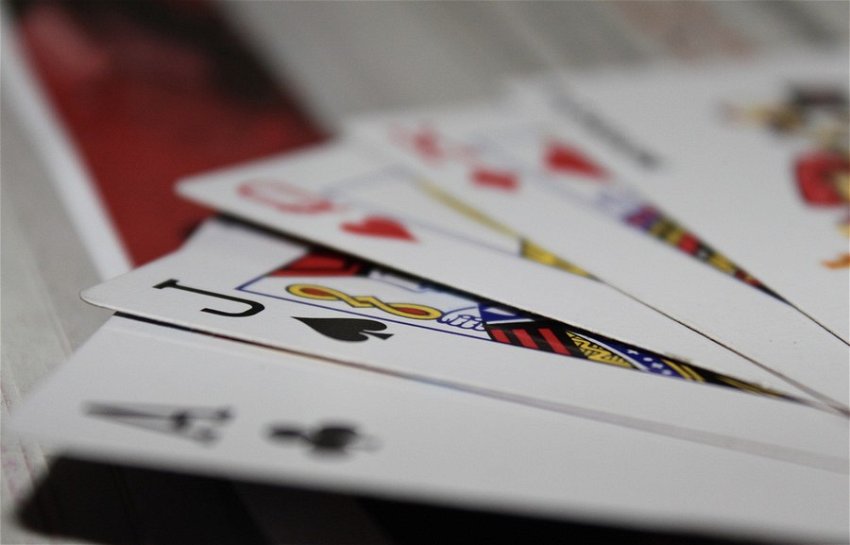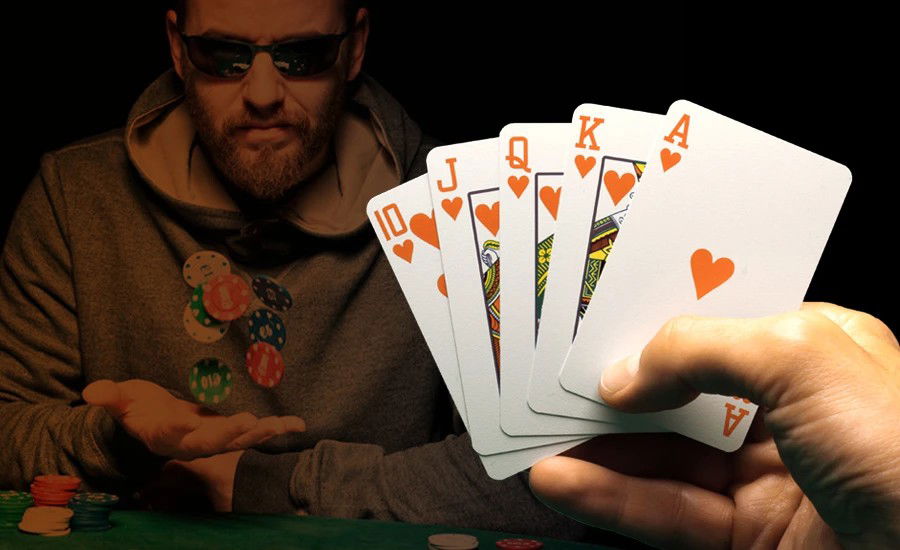A standard 52-card deck features hearts, diamonds, clubs, and spades. Each suit has 13 cards, excluding the jokers. There are four 10-value cards in each suit (10, Jack, Queen, King), with Aces counting as 1 or 11 depending on the casino card game you are playing.
But did you know that the King of hearts is the only King who doesn’t sport a mustache? Why is that? It’s not for aesthetic reasons, not even for hygienic reasons. But, it was an error in the original design. But here’s something else: The King of hearts doesn’t have an axe; he’s got a sword! Initially, he was designed with an axe, but a printing error made it a sword.
Aces High, Aces Low?
In card games like blackjack, baccarat, and poker, suits don’t matter. The King of hearts is just as worthy as the King of spades, and so forth. Ever wondered why blackjack is called blackjack? Split the word up into Black + Jack, and you may think that’s the answer. Actually, it was the work of club owners and their clever marketing strategies.
To convince people to play blackjack games these fellas decided to market the game by awarding a blackjack bonus to players with a 10:1 payout if players landed an Ace of spades and a Black Jack. Over time, the 10:1 blackjack payout disappeared, but the name stuck.
Speaking of the Ace of spades, you may wonder why it’s elaborately designed. The Ace of spades is more intricately decorated than the other Aces in many decks of cards. Back in the day, the English monarchy led by James I and later Queen Anne passed legislation that the printing house’s insignia be reflected on the Ace of spades.
Card printing houses were decorated with physical stamps as proof of tax paid. Card manufacturers have placed their logos on the Ace of spades since the 17th century. This tradition has remained intact over hundreds of years.
The Ace of spades was often a symbol of different military battalions, regiments, and units. But it was also used in war, as a psychological warfare tool on Vietcong fighters’ dead bodies. The Ace of spades was mass produced during the Vietnam war as American GIs left them on the Vietcong fighters’ dead bodies.
Here are some other fascinating facts about casino playing cards:
- Game creators made the first playing cards in China over a thousand years ago.
- The suits are believed to represent the four classes of medieval society: Hearts for the Church, Diamonds for the Merchants, Clubs for the Peasants, and Spades for the Nobility.
- The Joker was originally known as the Best Bower, the highest trump card in the deck. Creators eventually changed the name to Joker because it was thought to be a corruption of the word Juker, meaning trickster or court jester.
- Most decks have two Jokers, but some decks have only one.
- Bridge is played with a 52-card deck plus a Joker; Euchre is played with a 24-card deck plus a Joker; Pinochle is played with a 48-card deck; Canasta is played with two standard 52-card decks plus 4 Jokers, and 500 Rum is played with a standard 52-card deck plus 2 Jokers.
Now that you know much more about casino playing cards, their values, and their rich heritage, you can confidently play your favorite card games with newfound resolve. A combination of deliberate card designs, cultural heritage, and nuance has created a storied history that casino players can indeed celebrate!












— تعليقات 0
, ردود الفعل 1
كن أول من يعلق